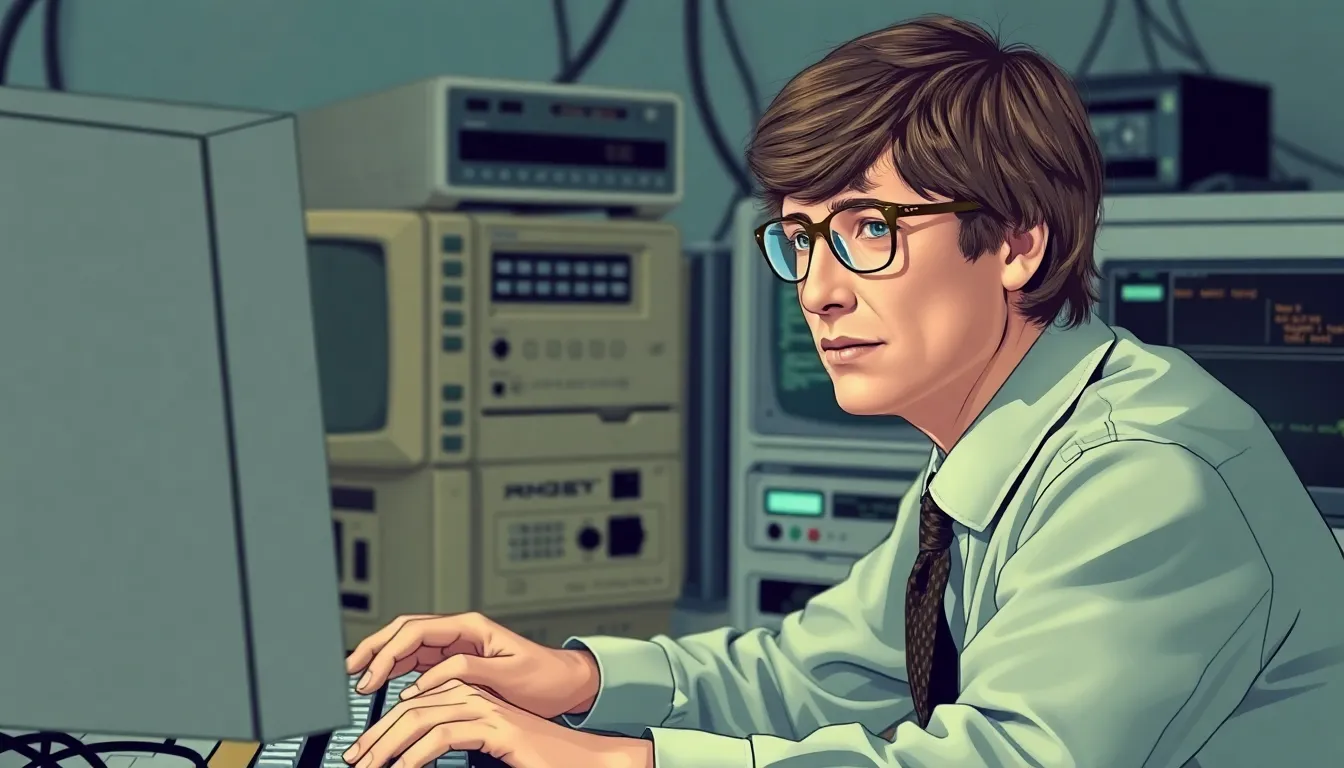Bill Gates, the tech titan who helped shape the digital world, isn’t just a name synonymous with Microsoft; he’s also a programming pioneer. While most folks know him for Windows and Office, few realize he actually dabbled in creating programming languages. Picture this: a young Gates hunched over his computer, coding away like a modern-day wizard conjuring spells.
Overview of Bill Gates’ Programming Journey
Bill Gates’ programming journey began in the early 1970s when he discovered his passion for coding. While still a teenager, he wrote his first program using the BASIC programming language. His enthusiasm for technology led him to develop variations of BASIC tailored for specific hardware platforms.
Gates co-created a version of BASIC for the Altair 8800, which marked a pivotal moment in the history of personal computing. This initial project caught the attention of the tech community and paved the way for the founding of Microsoft in 1975. He played a significant role in shaping Microsoft’s early software offerings beyond just BASIC.
In addition to BASIC, Gates worked on several other programming languages. He contributed to the development of the Microsoft Windows API, which allowed developers to create applications for Windows. His involvement extended to languages such as C and C++, essential for building robust software and systems.
Collaborating with various developers, Gates embraced new programming paradigms that emerged throughout the 1980s and 1990s. His focus on creating user-friendly programming environments made significant impacts on technology adoption. The evolution of web technologies also saw Gates engaging with languages like Java and JavaScript.
Throughout his career, Gates emphasized the importance of software development in driving innovation. His efforts in creating programming languages and tools continue to influence developers and the tech industry. Through these contributions, he established himself not just as a businessman but also as a trailblazer in programming.
Early Programming Languages

Bill Gates’ early programming journey involved several languages that shaped his skills and insights. His foundational knowledge significantly impacted his later innovations in the technology sector.
Basic Programming
BASIC, short for Beginner’s All-purpose Symbolic Instruction Code, marked Gates’ first programming experience. He wrote simple programs to understand logic and computation. Co-creating a version of BASIC for the Altair 8800 represented a major breakthrough in personal computing. This version allowed users to interact with the computer in a more approachable way. Enthusiasts and aspiring programmers alike embraced BASIC due to its simplicity and versatility. Gates’ work with BASIC laid the groundwork for future software development, showcasing its importance in the evolution of programming languages.
ALGOL and FORTRAN Influence
ALGOL and FORTRAN played crucial roles in shaping Gates’ programming perspective. Emphasizing structured programming, ALGOL influenced the design of many modern languages. It introduced concepts such as block structure and nested procedures, improving code organization. FORTRAN, known for its efficiency in numerical and scientific computing, showcased the potential for programming in complex domains. Gates appreciated the strengths of both languages, drawing from them as he expanded his programming repertoire. Their emphasis on clear syntax and efficient execution guided him in developing user-friendly software solutions later in his career.
Microsoft and the Development of Languages
Bill Gates’ influence extended deeply into programming languages at Microsoft. He played a key role in developing several languages that shaped software development.
Microsoft BASIC
Microsoft BASIC became a foundational programming language during the early years of personal computing. Gates co-created a version of BASIC for the Altair 8800, enabling users to write programs easily. The success of this language solidified Microsoft’s presence in the tech industry. BASIC thrived on simplicity, allowing users to interact with computers without extensive coding knowledge. The language reached millions of early computer users, paving the way for a generation of software developers. This innovation in programming directly influenced the software landscape and showcased Gates’ vision for accessible computing.
Visual Basic
Visual Basic emerged as a significant advancement in programming under Gates’ guidance. Released in 1991, this language emphasized user-friendly development environments. Visual Basic allowed developers to create graphical user interfaces quickly, simplifying application design. The drag-and-drop interface enabled less technical users to build applications easily. Accessibility became a hallmark of Visual Basic, which attracted a wide audience. Many businesses embraced this language for creating internal tools and applications. Gates helped shape a mainstream programming landscape that continues to impact software engineering practices today.
Impact on Software Development
Bill Gates’ programming endeavors significantly influenced software development. His early work paved the way for numerous programming languages that are widely used today.
Legacy of Programming Languages
BASIC, co-created by Gates, remains a fundamental language for beginners. It introduced many to computer programming by simplifying complex concepts. Microsoft BASIC soon became a staple in personal computing, allowing users to create software easily. Visual Basic revolutionized programming through its graphical user interface, enabling rapid application development. Legacy languages like these shaped the trajectory of many modern programming environments. Gates’ vision for accessible coding fostered a culture of innovation in software engineering.
Influence on Future Generations
Future generations of programmers owe much to Gates’ contributions. His work set the standard for user-friendly programming languages that prioritize ease of use. He demonstrated how software could be both powerful and approachable. Many current programming frameworks draw inspiration from Gates’ methods and innovations. Educational programs now incorporate BASIC and Visual Basic as introductory languages, continuing his influence. Aspiring developers benefit from a legacy that champions accessibility in technology. Gates’ impact extends beyond his time, resonating in today’s evolving tech landscape.
Bill Gates’ journey through programming languages has left an indelible mark on the tech industry. His early experiences with BASIC and other languages shaped not only his career but also the future of software development. By prioritizing user-friendly environments and accessible coding, he revolutionized how programmers interact with technology.
Gates’ contributions to languages like Microsoft BASIC and Visual Basic highlight his commitment to simplifying programming for a broader audience. This legacy continues to inspire new generations of developers, ensuring that the principles of accessibility and innovation remain at the forefront of programming education and practice. As technology evolves, Gates’ influence on programming languages will undoubtedly endure.






